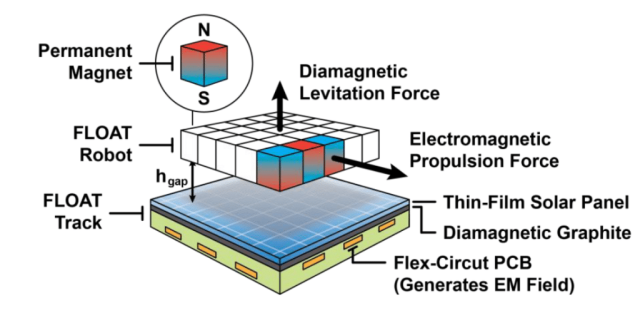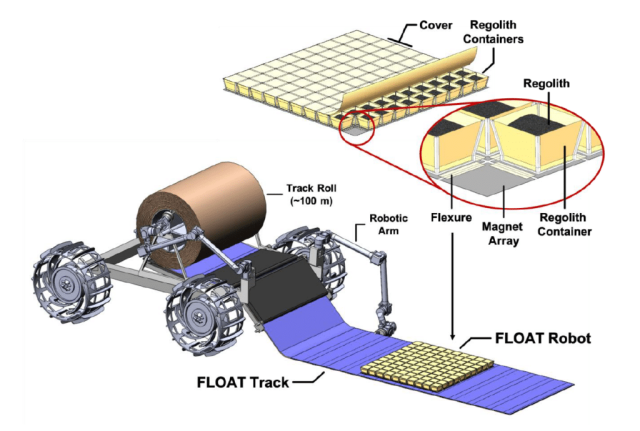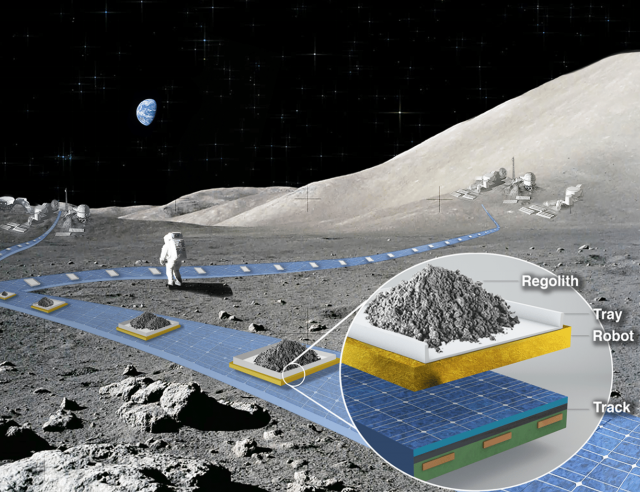When creating lunar bases, it will be necessary to solve the problem of cargo transportation on the surface of the Moon. American engineers have proposed a very interesting solution to this problem – a magnetic levitation system, the basis of which are tracks rolled on the lunar surface.
In 2017, NASA adopted the Artemis Lunar exploration program: this project provides for the landing of a man on the Moon (it is scheduled for the end of 2025) and the creation of a permanent lunar base in the late 2020s. When implementing this program, it will be necessary to solve many technical problems: in particular, to develop ways to efficiently transport cargo on the lunar surface. It will be necessary to take into account the aggressive conditions in which the transport system will operate: significant temperature differences, abrasive dust, accumulation of static electricity.
Engineers of the American company SRI International have proposed one of the solutions to this problem. They have developed a project for a magnetic levitation system, or maglev .
Its main component will be a kind of ribbons or tracks laid on the surface of the Moon. They consist of two layers: the first, made of graphite, creates a magnetic field that forces the trolleys with cargo to hang over the tape. The second layer is formed by "flexible electronics": this is the name of electronic circuits located on a flexible base. Electronics creates an electromagnetic field that forces the trolleys to accelerate or brake and thereby controls their movement along the belt.
 |
| The device of the caterpillar in the section and the forces acting on the levitating trolley. |
| Source: © NASA |
It is also possible to create a third layer consisting of solar panels: they can collect energy to power the system. The system, which will have to work in automatic mode, is called FLOAT: it is an abbreviation of Flexible Levitation on a Track, which literally translates as "flexible levitation over a caterpillar". The tracks really should have great flexibility, which will simplify the construction of the system: initially they can be rolled up into large rolls, unfolding on the spot, like a carpet.
 |
| The scheme of laying tracks by a specialized lunar rover. |
| Source: NASA |
It should be noted that passenger magnetic levitation systems have been working on Earth for a long time: the first of them (not counting experimental ones) was opened in Birmingham in 1984, it connected the city airport with the railway station. Now such systems are developing most intensively in China: Shanghai Maglev trains accelerate over 400 kilometers per hour. And in Japan, experimental trains reached speeds of 600 kilometers per hour.
The expected speeds of movement of the lunar maglev will be much lower — at least at the initial stage of the development of the system: the trolleys will move at a speed of only about a meter per second. Their carrying capacity will be about 30 kilograms per square meter. Hills or depressions will not be a problem, as the trolleys will be able to move at a slope of the route up to 30 degrees.
At first glance, it may seem that there is not much sense in using such an exotic mode of transport on the Moon, especially given the low speed of cargo movement. However, the proposed solution was born for a reason: as mentioned above, one of the serious problems facing the colonizers of the Moon is lunar dust. As Naked Science noted, it led to a series of malfunctions during the landing of astronauts on the Moon. Almost all systems with moving parts (for example, wheels) cannot work in contact with it for a long time.
The advantage of the Maglev over lunar vehicles and other possible types of lunar transport is that it is almost devoid of moving parts and, due to the sufficient height at which the trolleys will move, it is able to move loads without raising dust from the lunar regolith. Thus, the cargo will not gather dust. There is a danger that the dust will cover the tracks, but this problem can be solved: a special trolley is provided for cleaning the canvas- a "janitor" equipped with a brush. Moving along the tape, the trolley will sweep away the dust from it.
Experiments on Earth have shown the feasibility of the ideas underlying FLOAT. The developers of the system even tested the work of the "janitor". In addition, they conducted tests in a vacuum, because there is practically no atmosphere on the Moon.

